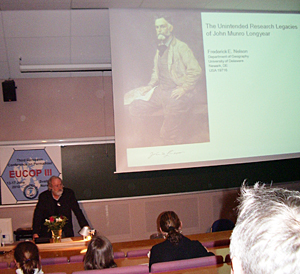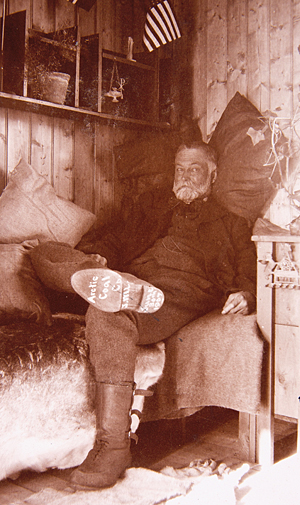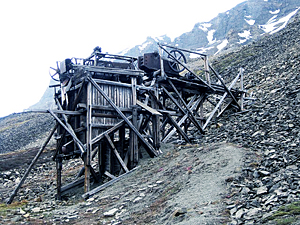


ADVERTISEMENT
- Rozovsky wins prestigious NSF Early Career Award
- UD students meet alumni, experience 'closing bell' at NYSE
- Newark Police seek assistance in identifying suspects in robbery
- Rivlin says bipartisan budget action, stronger budget rules key to reversing debt
- Stink bugs shouldn't pose problem until late summer
- Gao to honor Placido Domingo in Washington performance
- Adopt-A-Highway project keeps Lewes road clean
- WVUD's Radiothon fundraiser runs April 1-10
- W.D. Snodgrass Symposium to honor Pulitzer winner
- New guide helps cancer patients manage symptoms
- UD in the News, March 25, 2011
- For the Record, March 25, 2011
- Public opinion expert discusses world views of U.S. in Global Agenda series
- Congressional delegation, dean laud Center for Community Research and Service program
- Center for Political Communication sets symposium on politics, entertainment
- Students work to raise funds, awareness of domestic violence
- Equestrian team wins regional championship in Western riding
- Markell, Harker stress importance of agriculture to Delaware's economy
- Carol A. Ammon MBA Case Competition winners announced
- Prof presents blood-clotting studies at Gordon Research Conference
- Sexual Assault Awareness Month events, programs announced
- Stay connected with Sea Grant, CEOE e-newsletter
- A message to UD regarding the tragedy in Japan
- More News >>
- March 31-May 14: REP stages Neil Simon's 'The Good Doctor'
- April 2: Newark plans annual 'wine and dine'
- April 5: Expert perspective on U.S. health care
- April 5: Comedian Ace Guillen to visit Scrounge
- April 6, May 4: School of Nursing sponsors research lecture series
- April 6-May 4: Confucius Institute presents Chinese Film Series on Wednesdays
- April 6: IPCC's Pachauri to discuss sustainable development in DENIN Dialogue Series
- April 7: 'WVUDstock' radiothon concert announced
- April 8: English Language Institute presents 'Arts in Translation'
- April 9: Green and Healthy Living Expo planned at The Bob
- April 9: Center for Political Communication to host Onion editor
- April 10: Alumni Easter Egg-stravaganza planned
- April 11: CDS session to focus on visual assistive technologies
- April 12: T.J. Stiles to speak at UDLA annual dinner
- April 15, 16: Annual UD push lawnmower tune-up scheduled
- April 15, 16: Master Players series presents iMusic 4, China Magpie
- April 15, 16: Delaware Symphony, UD chorus to perform Mahler work
- April 18: Former NFL Coach Bill Cowher featured in UD Speaks
- April 21-24: Sesame Street Live brings Elmo and friends to The Bob
- April 30: Save the date for Ag Day 2011 at UD
- April 30: Symposium to consider 'Frontiers at the Chemistry-Biology Interface'
- April 30-May 1: Relay for Life set at Delaware Field House
- May 4: Delaware Membrane Protein Symposium announced
- May 5: Northwestern University's Leon Keer to deliver Kerr lecture
- May 7: Women's volleyball team to host second annual Spring Fling
- Through May 3: SPPA announces speakers for 10th annual lecture series
- Through May 4: Global Agenda sees U.S. through others' eyes; World Bank president to speak
- Through May 4: 'Research on Race, Ethnicity, Culture' topic of series
- Through May 9: Black American Studies announces lecture series
- Through May 11: 'Challenges in Jewish Culture' lecture series announced
- Through May 11: Area Studies research featured in speaker series
- Through June 5: 'Andy Warhol: Behind the Camera' on view in Old College Gallery
- Through July 15: 'Bodyscapes' on view at Mechanical Hall Gallery
- More What's Happening >>
- UD calendar >>
- Middle States evaluation team on campus April 5
- Phipps named HR Liaison of the Quarter
- Senior wins iPad for participating in assessment study
- April 19: Procurement Services schedules information sessions
- UD Bookstore announces spring break hours
- HealthyU Wellness Program encourages employees to 'Step into Spring'
- April 8-29: Faculty roundtable series considers student engagement
- GRE is changing; learn more at April 15 info session
- April 30: UD Evening with Blue Rocks set for employees
- Morris Library to be open 24/7 during final exams
- More Campus FYI >>
3:23 p.m., Aug. 2, 2010----About 9:30 A.M. land came in sight. Steep, rocky crags and peaks, covered or streaked with snow. It was a grandly desolate, sublime, weird landscape, utterly barren and unlike anything I had ever seen. The sun seemed to be boring holes through the clouds...
Thus wrote U.S. adventurer and entrepreneur John Munro Longyear in his journal entry for July 14, 1901, expressing his initial reaction to Spitsbergen, a group of islands in the Barents Sea far to the north of Norway.
Spitsbergen and the ways in which its land would be used were to change profoundly over the next few years after Longyear, who had earlier amassed fabulous wealth through his timber and mining ventures in the U.S. Midwest, saw opportunity in seams of good-quality coal cropping out on slopes high above the floor of what soon would be named Longyeardalen (“Longyear Valley”).
Present-day permafrost researchers also saw opportunity on these Norwegian islands, now collectively known as Svalbard, for the location of the third European Conference on Permafrost (EUCOP III) held June 13-17 at the University Centre in Svalbard (UNIS). The conference was attended by more than 250 scientists from 27 countries, including permafrost researchers from the University of Delaware.
Frederick (Fritz) Nelson, UD professor of geography, has been working on problems involving permafrost for over a quarter century and has published more than 125 peer-reviewed articles and several monographs on the subject. Permafrost is defined as “any subsurface earth materials that remain in a continuously frozen state for two or more years.”
Nelson and UD doctoral graduate Nikolay Shiklomanov, now an assistant professor at George Washington University, oversee the Circumpolar Active Layer Monitoring (CALM) program, the world's oldest and most comprehensive global-change research program focused on permafrost.
EUCOP III featured several sessions devoted to the active layer and the CALM program. One presentation by Nelson, Shiklomanov, and Dmitry Streletskiy -- who received a Ph.D. in climatology from UD in 2010 -- outlined plans for the third block (CALM III) of research funding from the National Science Foundation. CALM III was recently funded for more than $2 million, and will run through 2014.
During the event, Nelson also delivered the conference's keynote public lecture, “The Unintended Research Legacy of John Munro Longyear,” open to conference participants, townspeople, and tourists, about Longyearbyen's (Longyear City's) namesake.
A serious injury motivated the 23-year-old Longyear to move to Michigan's Upper Peninsula for health reasons in 1873, setting in motion a chain of events that led to the establishment, among many other ventures, of a major coal-mining industry in Svalbard.
By the mid-1880s, Longyear had amassed a fortune through shrewd land deals and mining ventures in Upper Michigan and was one of the richest men in the country. He served as mayor of Marquette, Mich., was on the boards of several universities including MIT, and founded one of the most exclusive sportsmen's clubs in the country.
Following the tragic death of his 20-year-old son in 1900, Longyear took his family on an extended journey that included a stop in Spitsbergen. He returned in several subsequent summers, and by 1905 had chartered the Arctic Coal Company (ACC), the first commercially viable coal-mining operation in Svalbard.
All parts of the Svalbard Archipelago not covered by glacial ice are underlain by permafrost, and ACC's efforts to tunnel into hillsides repeatedly encountered massive ground ice that required engineering solutions not widely known at the time. A dedicated diarist, Longyear made numerous notes about these problems in his journals, revealing a keen mind brimming with physical insight and practical problem-solving abilities, Nelson said.
Longyear's efforts to mine coal in this rigorous environment were successful, and more than 100,000 metric tons of it was shipped from Spitsbergen between 1905 and 1916, when Longyear and his partner sold the operation to Norwegian mining interests. In 1920, Svalbard was awarded to Norway under the terms of the Treaty of Versailles. Among the treaty's unusual provisions is a clause that allows citizens of any signatory nation to live and work in Svalbard without visa requirements.
Nelson has crossed Longyear's path repeatedly since the day of his first college class in the Longyear Hall of Pedagogy at Northern Michigan University. Nelson was twice the recipient of the University of Michigan's Scott Turner Award, named for Longyear's cousin, who was the on-site manager of the Arctic Coal Company's operations in Spitsbergen.
Since 2004, Nelson has operated a climate-observation program along the southern shore of Lake Superior in the Huron Mountain Club (HMC), one of the largest areas of primeval forest remaining in the eastern U.S. Longyear founded HMC in 1889.
In 1955, a quasi-independent organization known as the Huron Mountain Wildlife Foundation (HMWF) was formed, following development of a land-management plan for HMC by Aldo Leopold. Nelson stays for several weeks each year in Longyear's summer house at “Emblagaard,” an experimental farm now owned by HMWF and operated within club boundaries as a scientific field station.


